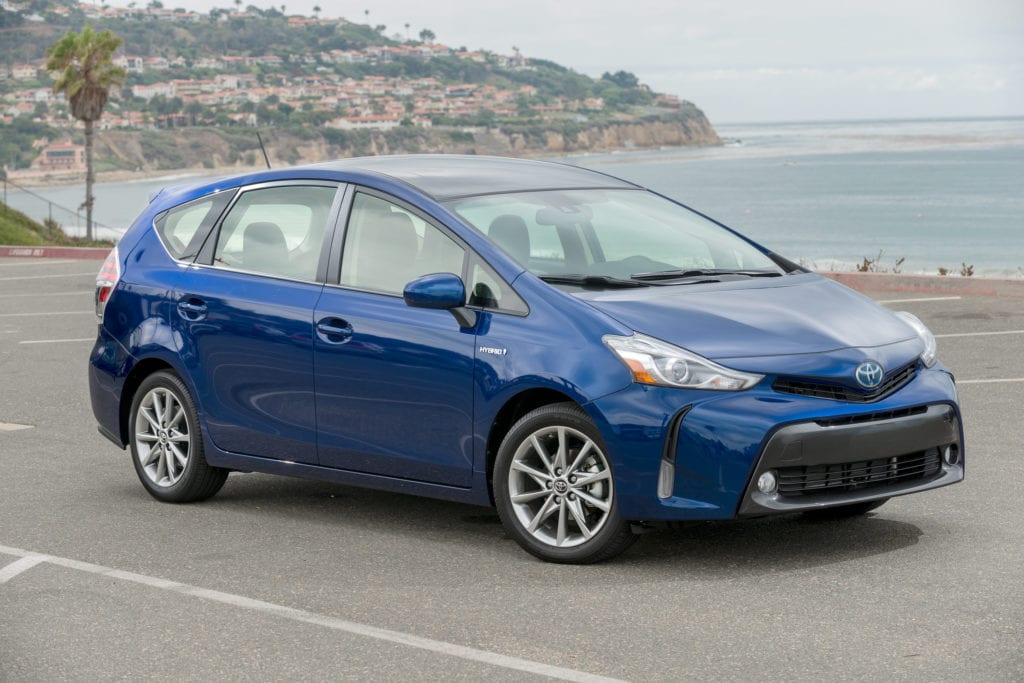Return of the Station Wagon

Station wagons.
Many of us grew up in them. The green 2-door Plymouth Suburban. The red and white Ford Parklane with the Thunderbird V-8. That slow-as-a-slug 6-cylinder automatic Chevy Kingswood. Like the dog, they were lovable members of the family.
If you are less than about 55 years of age, that paragraph likely means nothing. You possibly grew up in minivans or SUVs. Too bad. You missed a sweet spot in the automotive timeline. Then again, hope is not lost. Station wagons are still around…in style and utility if not in name.
They were called station wagons because they were originally devised to take people to and from stations. In the beginning, the vehicles often had hand-built wooden bodies. Then steel took over, though homage was long played to the segment’s heritage with “woodie” station wagon options.
Come 1976, station wagons were 10 percent of the vehicle market, more than 970,000 sold. They were also on their way out. The 1976 Buick in the below photo weighed just over 5100 pounds and needed a thirsty 455-cubic-inch V-8 to get the job done. Worse yet, the car’s handling has been described as that of a bathtub half-full of water.

Definitely not the vehicle for the future, given the fuel economy standards put into effect after the 1973-1974 Arab Oil Crisis, ready to hit automakers right between the headlights in 1978.
Thanks to Chrysler, minivans became the people hauler of choice after 1984 and by the mid-1990s there were civilized SUVs to tempt families. Then came the CUV. Wikipedia’s definition says it, “…is a vehicle built on a car platform and combining, in highly variable degrees, features of a sport utility vehicle (SUV) with features from a passenger vehicle, especially those of a station wagon or hatchback.”

In other words, an automaker can make up its definition of a CUV as it goes along.
It’s easy to understand why automaker’s marketeers dig deep into their cauldron of adjectives to describe a vehicle as a CUV or SUV rather than a station wagon. These days, station wagons make up just 1.1 percent of vehicles sold. CUVs, on the other hand, were 33.9 percent of vehicle sales in the first three months of 2017.
Karl Brauer, analyst at Kelly Blue Book adds, “No car maker wants to admit to making a station wagon because of the stigma still attached to that word, so most of them use phrases like ‘crossover’ or ‘sportwagon’ to avoid visions of Chevy Chase driving across America in the Griswold family’s Truckster.
“The good news is, no matter what you call them, these vehicles all offer greater utility and flexibility than a similarly sized sedan. If we all have to nod our heads and agree not to use the term ‘station wagon’ so be it.”

Arguably the most glaring example of redefining the wagon might be Mercedes-Benz’ GLA250 and AMG GLA45. The automaker labels them SUVs when it in reality, they are attractive, sweet-size station wagons with lower cladding and a bit more ground clearance.
Volvo has long been what you might call the “keeper of the keys” when it comes to station wagons. Most all of us who owned one have warm memories of them, whether a 122, the 145 or my intercooled Turbo Wagon that could chase down pony cars.
The Swedish automaker’s U.S. product manager, Anders Robertson, explains how they managed to have what they freely call a station wagon.

Their XC90 is an SUV. Designed on the same platform is the V90 Cross Country, “It’s not as extreme as an SUV, but based on a wagon with more ground clearance and all-wheel drive standard. It has basically the off-road capabilities of the SUV type of vehicles, providing the agility of an SUV with the road holding a sedan.” Volvo calls it a Crossover Wagon.
Remove the added ground clearance and the cladding along the lower sill and wheel arches and you have the V90 station wagon.
Volvo does this dance with its XC60, V60 Cross Country and V60 station wagon.
In a comment that underlines another reason other than stigma why many automakers avoid station wagons, Robertson admits they will only sell a few hundred V90 wagons. Once the XC90 and V90 Cross Country were certified for U.S. sale, so was the V90. If you want one, you custom order it from the dealer or online and wait about 3 months for the car.

So why does Volvo go through the effort? “We have a fan base,” Robertson points out. “A heritage. People who want the wagon know we have it.”
Which does nothing to explain the newest station wagon headed for the U.S. market. Buick’s Regal TourX. It is based on the station wagon version of the Insignia made by Opel, which General Motors recently sold to France’s PSA.
Images of the Insignia wagon show no lower cladding or increased ride height, but there they are on the TourX. Sorry, Buick, it’s still a station wagon…and a handsome one. Power comes from a 2.0-liter turbocharged four-cylinder engine with an estimated 250 hp and 295 lb-ft of torque. The transmission is an 8-speed automatic and all-wheel drive is standard.

We’ve assembled a gallery of images of some vehicles we consider to be station wagons. And we’d be curious to hear your opinions.














